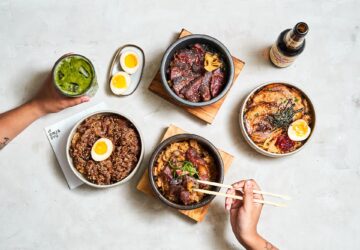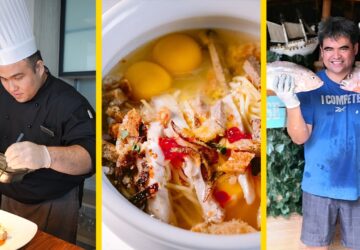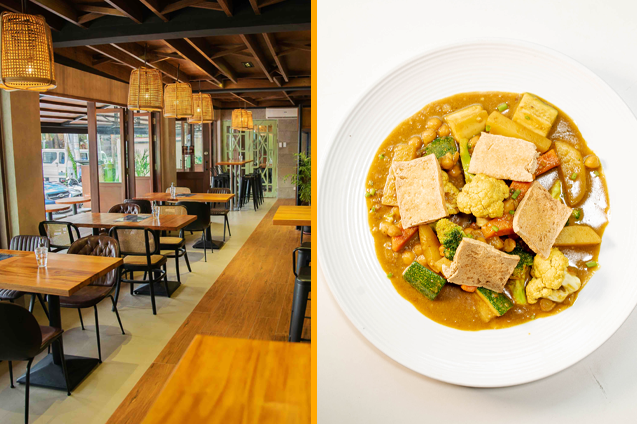Restaurants are charged with responsibility.
To prepare food hygienically, provide a reasonably comfortable dining environment, and package cooked food properly—when taken out that is. This list is never exhaustive, but in an industry buoyed by a gradually reopening economy and an ongoing pandemic, this list is even more lacking.
Restaurants now accepting diners face the new responsibilities of creating sterilized spaces, expanding health protocols, and providing guests with healthy food options—all while crafting a convincing dining experience.
PJ Lanot, owner and manager of Pino and Pipino Veg restaurants along Maginhawa Street in Quezon City, has spent a pandemic grappling with this responsibility and recognizes the difficulty restaurateurs face in keeping their establishments afloat.
“Us restaurateurs must do so much better than the cooks in our customers’ houses,” he says, “and our [restaurant] experience must be so compelling and worthwhile to make them leave their homes and somehow risk their safety, and allot budgets from their tight finances for this particular luxury.”
Over 10 years of business didn’t keep Pino from closing
Pino, since opening in 2008, has built its brand on “leveled-up FIlipino cuisine,” creating a band of returning diners around its best-selling kare-kareng bagnet, a rich, nutty Kapampangan curry topped with crispy, savory Ilocano deep-fried and air-dried pork.
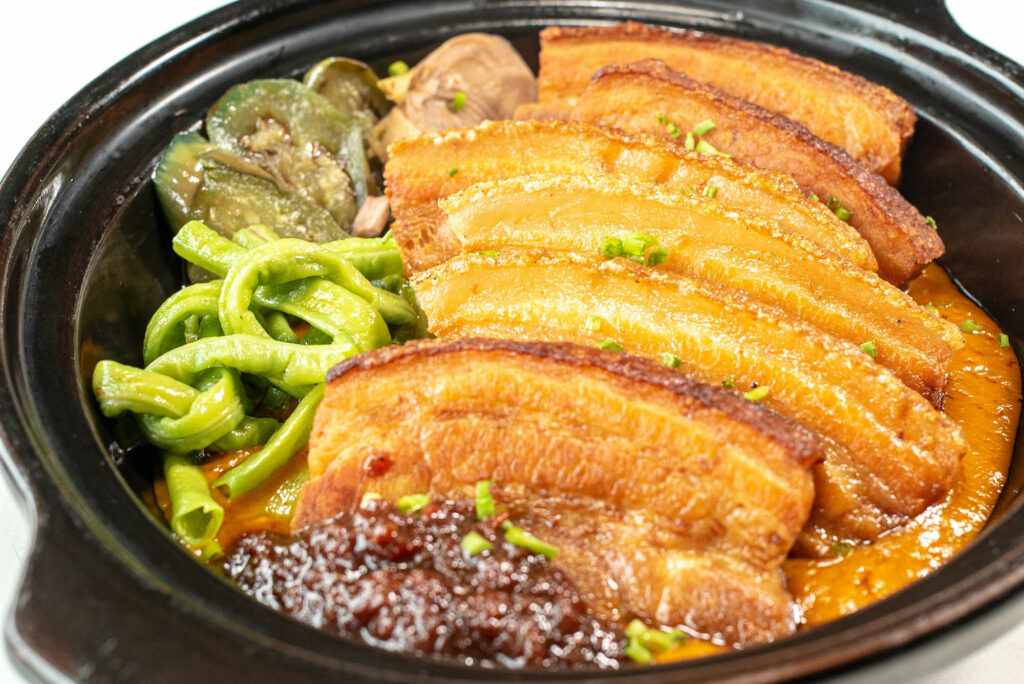
Moving from its original 48-square-meter space to its larger and current space on Malingap Street in 2010, Lanot and the team recognized that it wasn’t just their space and number of customers that had grown: The customer’s tastes had grown, too.
With folks outside Quezon City coming to visit, along with health-conscious groups from nearby universities and medical institutions (the Philippine Heart, Lung, and Kidney Centers and East Avenue Medical Center are all within a two-kilometer radius), a growing demand for healthy vegetable-heavy food dawned on the restaurant.
Referencing his then-girlfriend and now-wife Alessa, Lanot recalls the experience of a vegetarian looking to dine out. “I felt a pain point from her experience in Pino, as she [could] only eat appetizers from the restaurant, such as salad and fries. She [couldn’t] even bring her vegetarian friends to Pino.”
Recognizing this underserved market’s potential, Pino developed a six-dish vegetarian menu in celebration of Earth Day 2010, and within six months developed enough dishes to open a fully vegan restaurant.
“Our [restaurant] experience must be so compelling and worthwhile to make [customers] leave their homes and somehow risk their safety, and allot budgets from their tight finances for this particular luxury.”
This was the birth of Pipino Veg, which now serves a non-dairy version of the delightfully sweet kare-kare among a vast and colorful selection of vegan dishes, from tangy bistek tofu to the nutty Pinakveg risotto.
But this colorful painting of expanding customer tastes and a restaurant team willing and able to meet them is situated in a world ravaged by a pandemic. Prior to the restrictions implemented to halt the spread of COVID-19 in the country, the duo of Pino and Pipino Veg was serving an average of 150 persons on weekdays and 250 persons on weekends.
“This quickly dropped to 30 persons in the first week of March 2020,” says Lanot, “and of course zero when the hard lockdown was announced.”
Working quickly to keep the business going, Pino and Pipino Veg reopened in May 2020 purely for deliveries with an on-and-off dine-in service depending on the community quarantine status. It wasn’t easy going though. “We experienced firsthand that our business model and operation [wouldn’t] survive the operating expenses, government requirements, and cost of goods,” Lanot says.
The team decided to close operations in April 2021 at the onset of the second enhanced community quarantine.
The reinvention from April through August
Bears hibernate, butterflies grow in cocoons, and Amazon started in a garage. Sometimes, a period of what to the casual onlooker appears to be dormancy is a necessary and healthy reinvention.
In the span of five months, the team behind Pino and Pipino Veg has refined the restaurants’ menus, expanded its safety and hygiene protocols, rebuilt its interiors to allow al fresco dining, and is now open from 7 a.m. to 9 p.m. with new breakfast offerings.
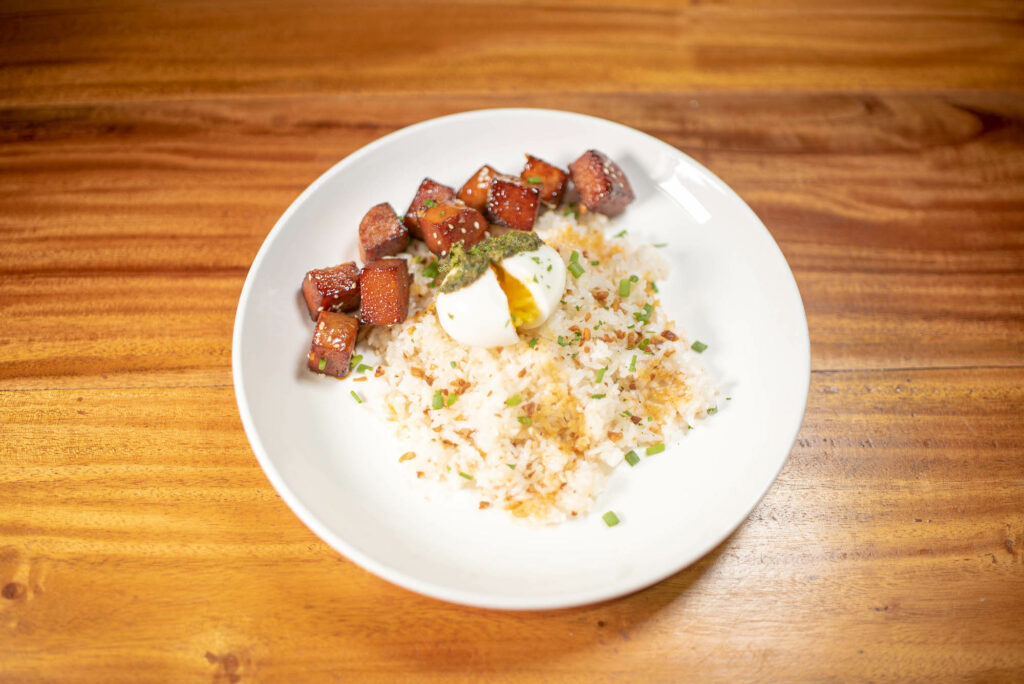
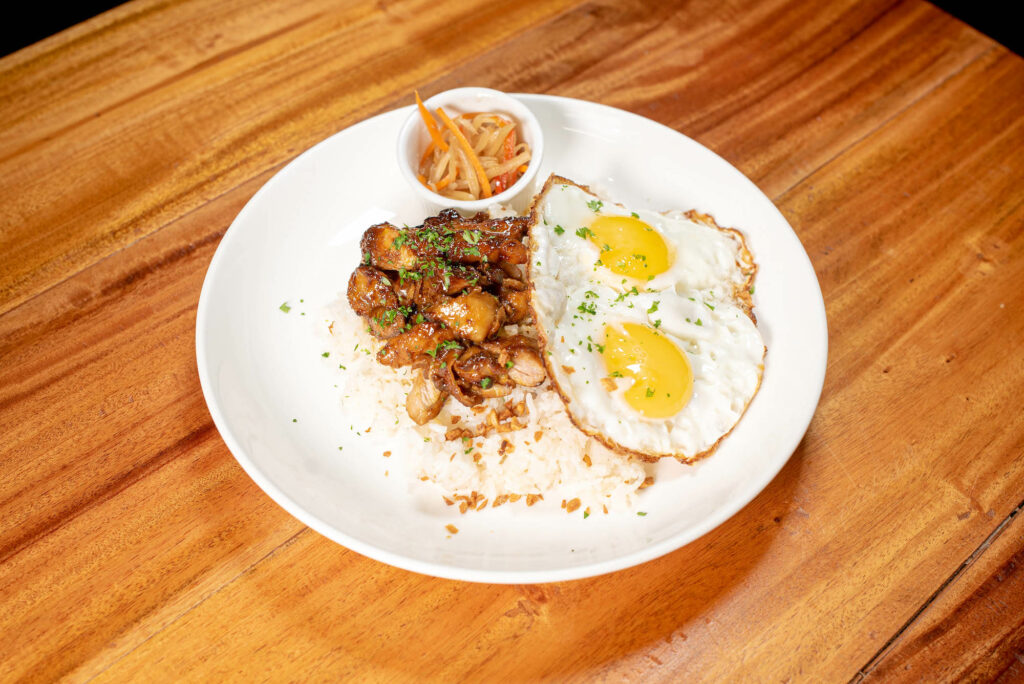
“Generally, we envisioned Pino and Pipino Veg to be ‘pandemic-proof’ in every way possible,” Lanot says. “Our business model [is to] to survive even if the situation remains the same, hopefully not worse, in the years to come.”
The new outlet can serve a total of 150 persons at any given point in time. Since the restaurants reopened their doors on Oct. 15, specifically since the start of Alert Level 2, the team has averaged serving 100 to 150 persons per day.
This sudden bounce back of dine-in guests might be symptomatic of how sorely dining out has been missed. “Even during the start of GCQ, Alert 4 and 3, we [concluded] that indeed, the restaurant-eating public really wanted to go out and experience culinary delights again, given they and the people they are with feel safe and secure.”
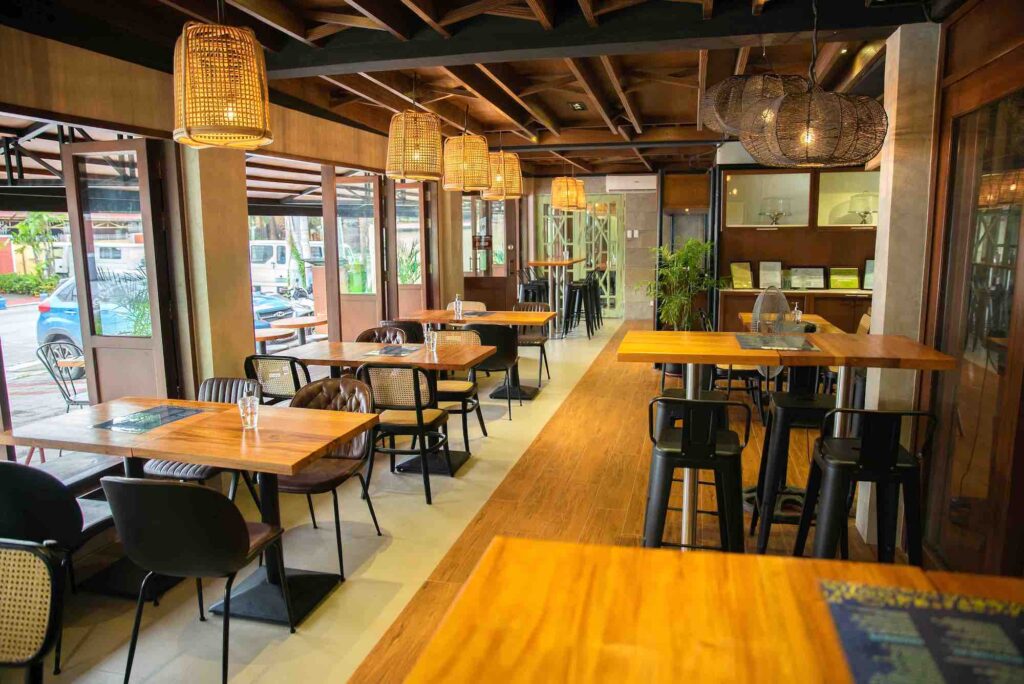

Having covered the responsibility of providing healthy food options with Pipino Veg, the restaurants now needed to create safer sit-down spaces. “We encouraged all our employees to be vaccinated, our menus [were] laminated for easier handling and cleaning, and [we] utilized QR code versions [of our menus] for lesser interaction,” Lanot says.
The team also began to offer a park-and-dine service, whereby customers can reserve a parking slot and staff can serve from outside their vehicles.
The restaurant team also worked with Manila Increation Studio to develop dynamic interiors. “[The restaurants now have windows and doors opening for al fresco and aircon options, with dedicated front and rear al fresco areas,” explains Lanot.
The vast space appears cozy and warm with gentle earthy wood on the ceilings, walls with brushes of green paint on doorways, and plants dotting key nooks. The tables are spread far apart, just enough to keep guests comfortable.
It’s a picture of health and wellness.
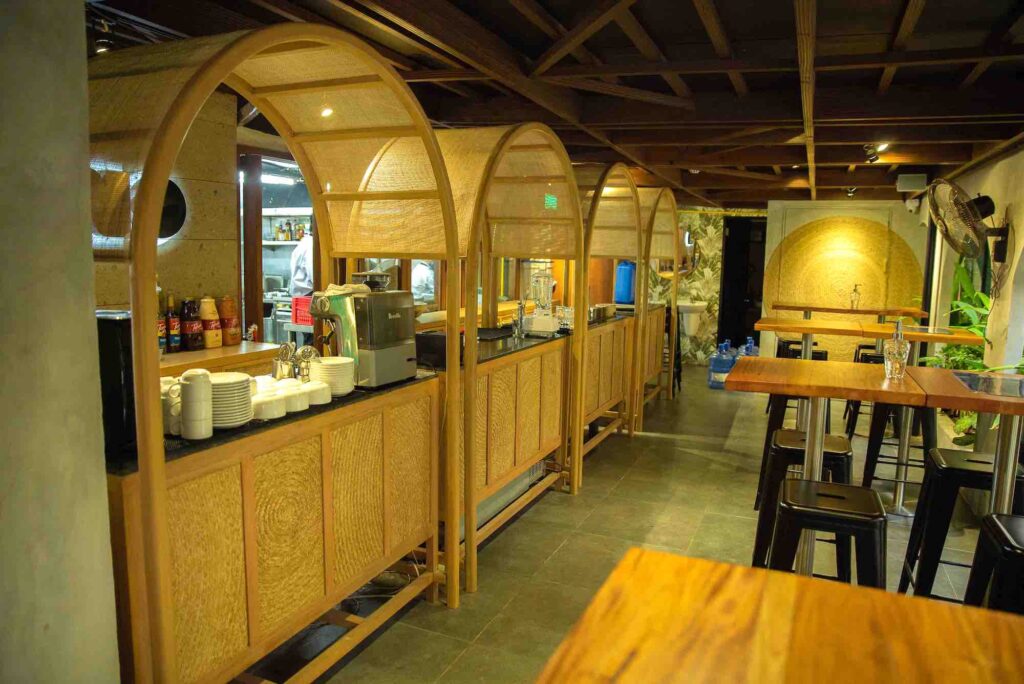
Best practices in a pandemic-stricken world
While declining daily case counts nuzzle us with the hope that this whole pandemic might just be over, resurgences of the coronavirus around the world and the threat of new variants must temper idealism with reality.
Business owners, especially those providing more elastic services such as dining experiences, need to deal with reality head on, bringing all the necessary elements into their business models to keep them going.
“Generally, we envisioned Pino and Pipino Veg to be ‘pandemic-proof’ in every way possible,” Lanot says. “Our business model [is to] to survive even if the situation remains the same, hopefully not worse, in the years to come.”
Two additions to the traditional restaurant operation are delivery capabilities and multiple modes of payment.
Currently, Pino and Pipino Veg can deliver via what Lanot calls DIY delivery. “Customers may message us via Viber, FB Messenger, and SMS, and we’ll arrange for the delivery via Lalamove, Grab, and J&T,” he explains.
This is in addition to the restaurants’ presence on GrabFood, Foodpanda, Foodie.ph, and Beep Delivery. Lanot adds that the team plans to extend their presence on Pick-A-Roo and JoyRide Super App.
While it requires a bit of research to get this all going—these companies have varying rates, with some lowering their charges depending on the amount of business the restaurants bring—expanding beyond the traditional dine-in business to ensure that food can move even in harsh lockdowns is part of future-proofing a restaurant business.
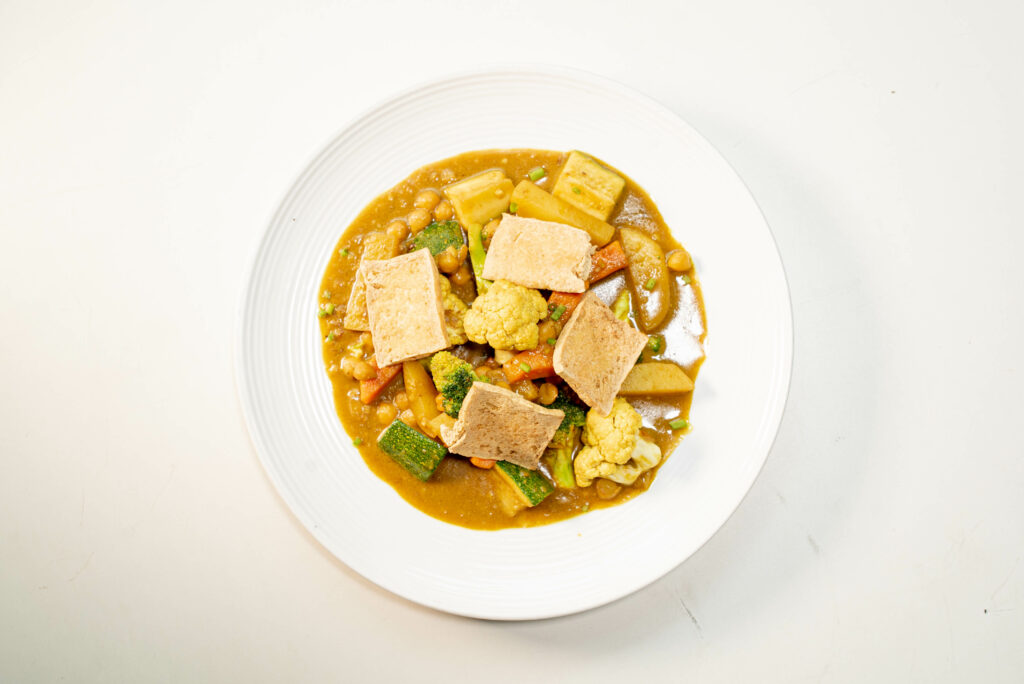
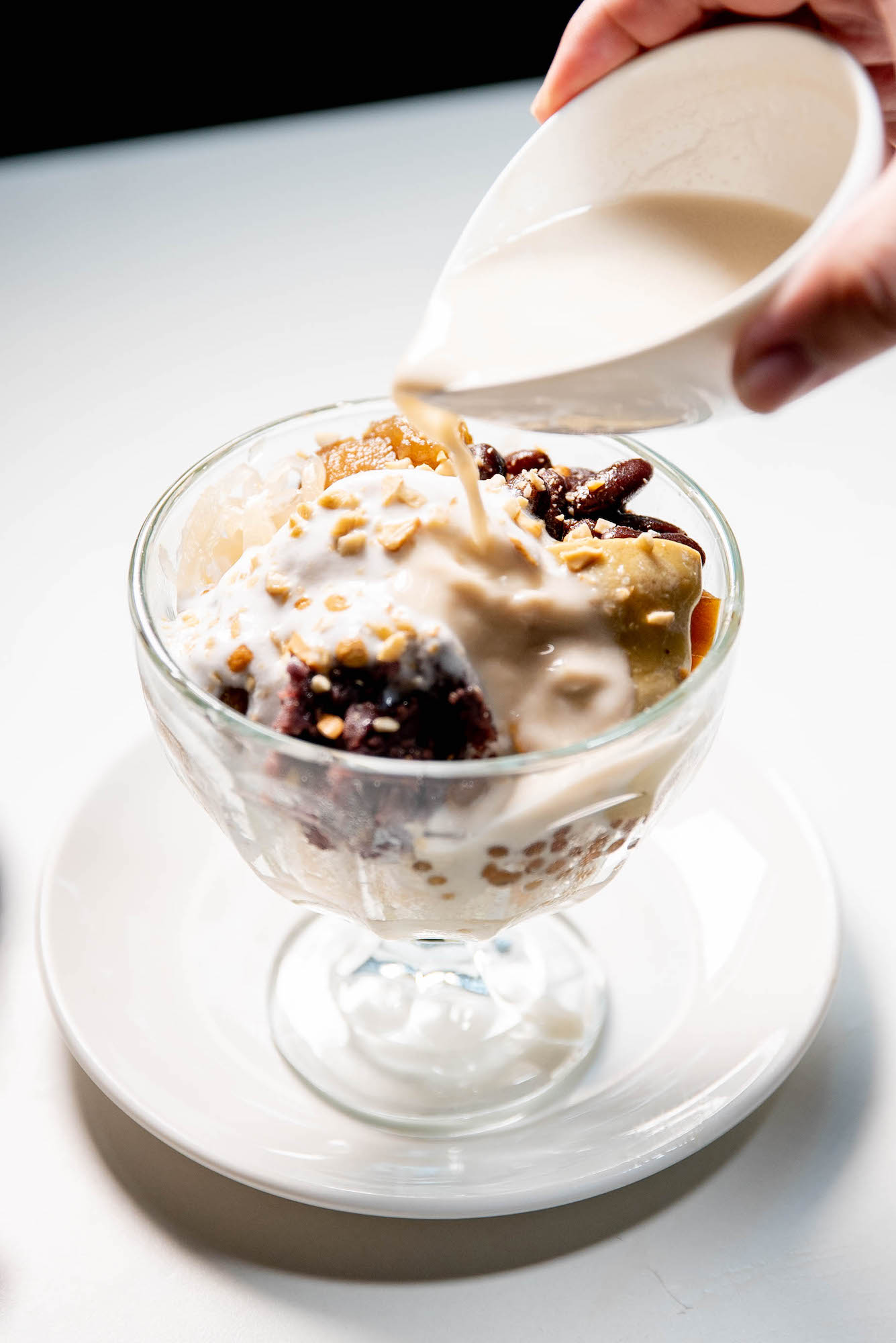
Pino and Pipino Veg began delivering as early as 2015, with the delivery service accounting for around 8 to 10 percent of the business. During the lockdown, it was the main driver of operations.
The rallying share prices of e-wallet companies (specifically the large corporations that own them) signal how large this business has grown. Buying things with cash is less common than it used to be.
With dine-in customers less keen on paying in cash, Lanot has recognized that mobile wallets like GCash and online bank transfers have become preferred modes of payment in Pino and Pipino Veg’s market. “Especially for individuals and small groups because of the zero transfer fees,” he adds.
“For bigger groups, cards are still used for the points, but rarely do we see cash payments nowadays.”
Pandemic-proofing is about attention to detail and focus on the customer
Responding to a question on whether the company managed to save a lot of cash while focusing solely on deliveries, Lanot provides what was a surprising answer.
“If the business still pays 25 to 30 percent on delivery fees, commercial rates for water and electricity with operating expenses merely deferred, [with the] cost of veggies and meats on the rise, and the government offering no discounts to annual, quarterly, or monthly dues and labor management, the cost of doing business remains the same, making the top and bottom lines tight for all entrepreneurs.”
“If the business still pays 25 to 30 percent on delivery fees, commercial rates for water and electricity with operating expenses merely deferred, [with the] cost of veggies and meats on the rise, and the government offering no discounts to annual, quarterly, or monthly dues and labor management, the cost of doing business remains the same, making the top and bottom lines tight for all entrepreneurs.”
This is not an easy business to operate after all.
Not only is it doused with responsibilities to its guests, it’s also imbued with many costs to manage, a marketing plan that must now be internet-friendly, and a customer that now expects more every time they leave the safety of home.
Lanot says that to survive, the cost of goods has to be managed by finding effective suppliers, negotiating affordable delivery and better payment plans, and, at the same time, not compromising on quality.
Staffing also needs to be streamlined, location fitted with cost-efficient equipment, and branding apparent both in the food and in design.
While this sort of management requires a granular attention to the operations of the business, industry players now find themselves in an environment in demand of this sharp focus—both as a responsibility and for the sake of survival.


